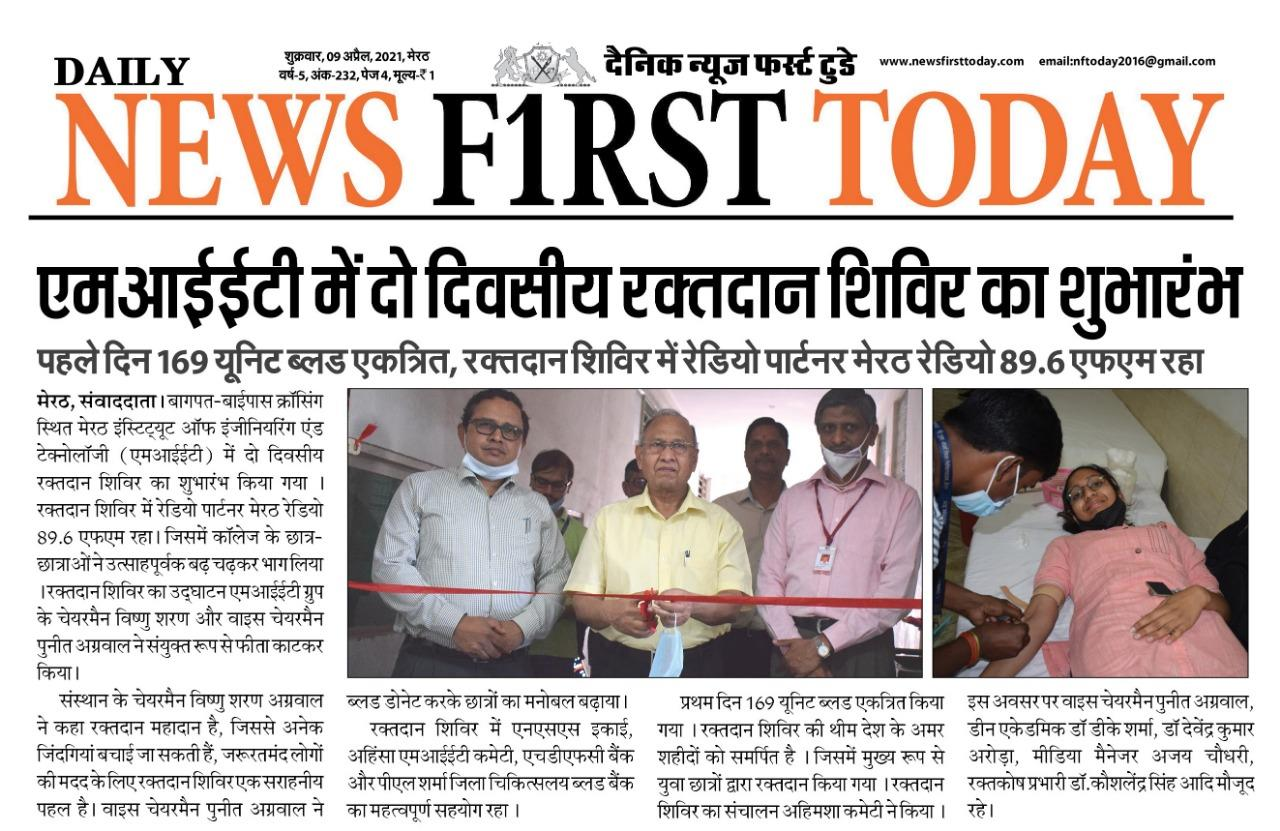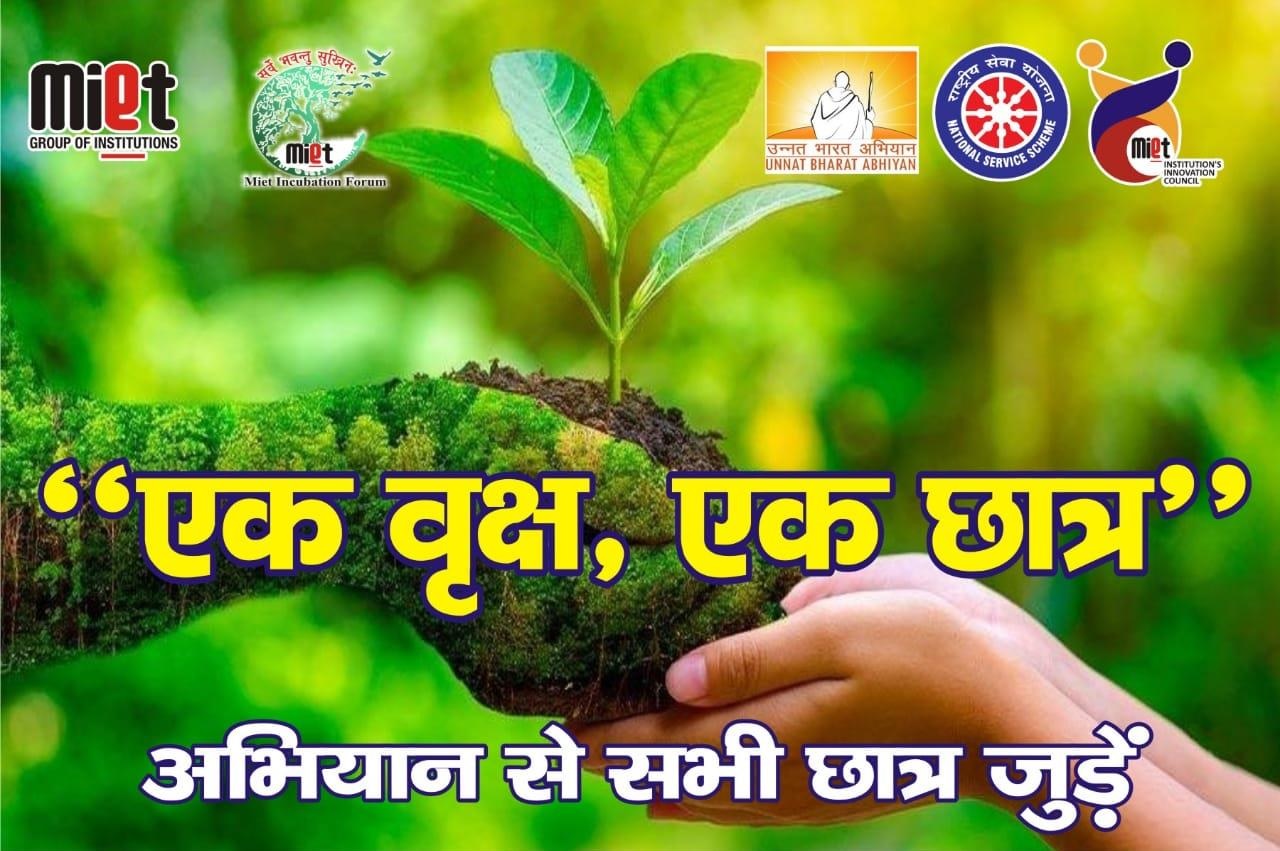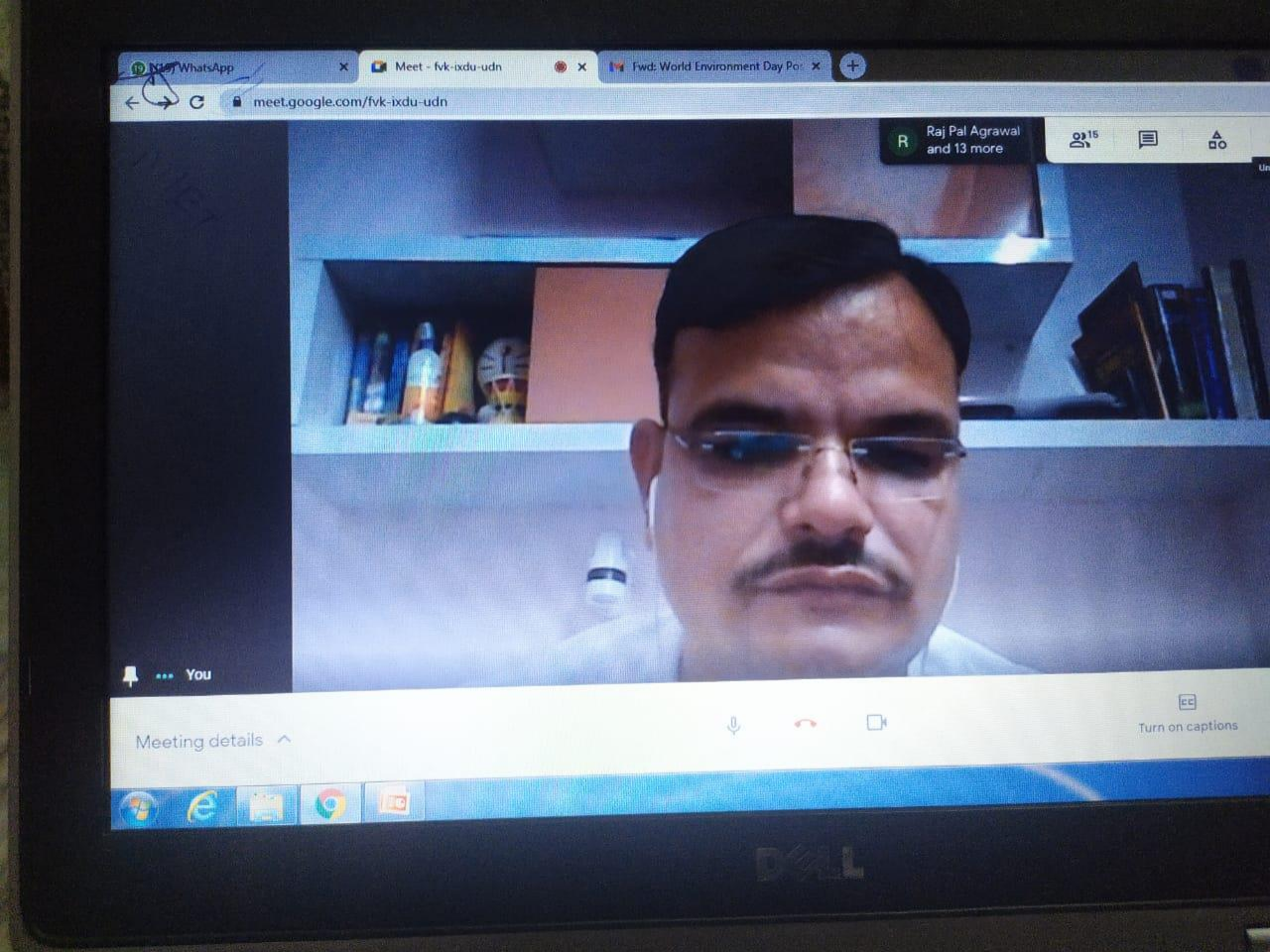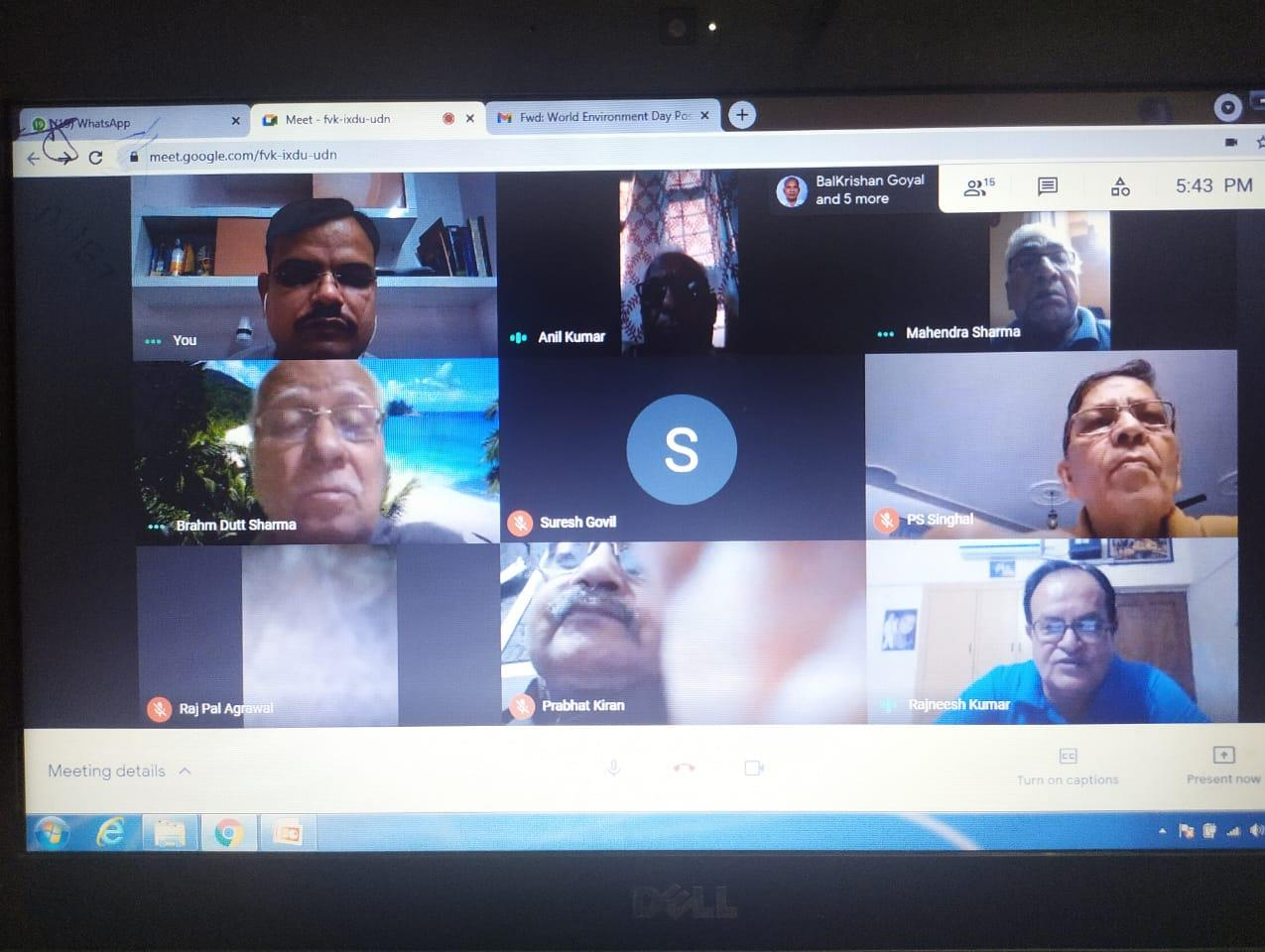Written content related to Celebration Team that is Ecosystem Restoration
World Environment Day has been celebrated every year on 5 June, engaging governments, businesses and citizens in an effort to address pressing environmental issues.
World Environment Day offers a global platform for inspiring positive change. It pushes for individuals to think about the way they consume; for businesses to develop greener models; for farmers and manufacturers to produce more sustainably; for governments to invest in repairing the environment; for educators to inspire students to take action; and for youth to build a greener future.
Lecture given by Dr. Sandeep Sirohi on the occasion of World Environmental Day
Dr. Sirohi explained that Ecosystem Restoration is the process of assisting the recovery of an ecosystem that has been degraded, damaged, or destroyed. He entioned that the causes of environmental degradation are Overpopulation, Pollution, Deforestation, Global warming, Agricultural and Fishing practices, Overconsumption, and Militarization. He discussed each of them in detail with examples. While planning for Eco-restoration, our attention should always be to focus on the function, process, structure, and services of the ecosystem. The ecosystem’s size and its dynamics involve two main processes i.e., energy flows through ecosystems and chemical cycling to matter cycle within them. He also explained biological cycles, water cycle, carbon cycle, nitrogen cycle, and phosphorus cycle. He discussed other approaches for restoration including bioremediation. The level of restoration may be of four types- Full or Complete restoration, restoration of only certain attributes, only rehabilitation or reclamation. He narrated examples of several restoration projects around the world which have made remarkable progress in rolling back the clock and somewhat restoring it to its original shape. This included the case of Hiroshima and Nagasaki, the Tangshan earthquake (China), Cyclon Nargis (Mayanmar). Dr. Sirohi concluded his lecture by giving the benefits of ecosystem restoration, which are-1. Re-establishment of potential native species. 2. Protecting from erosion and surface run-off. 3. Improving wildlife habitat. 4. Improving native species bio-diversity and biological diversity on degraded landscapes. 5. Increase the population and distribution of rare and threatened species. 6. Enhance landscape connectivity. 7. Increase the availability of environmental goods and services and 8. Contribute to the improvement of human well-being.






